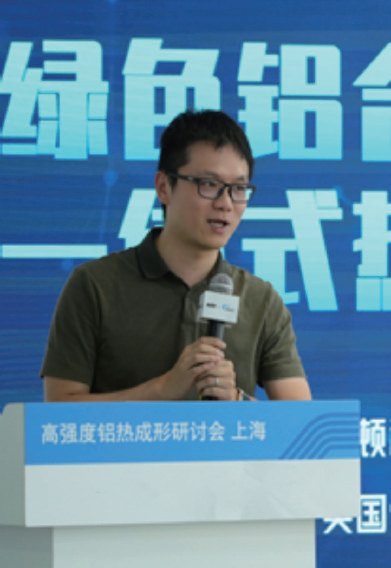Tiantian Zhang1
1 Sington Technologies Co., Ltd., Shanghai, 201300, China
EXTENDED ABSTRACT: In recent years, with the introduction of the Materials Genome Initiative in the United States, new materials development has been moving towards a direction guided by data and computation. Physical algorithms such as CALPHAD, DFT, MD, and artificial intelligence algorithms are increasingly being applied in materials development. However, these algorithms also face many challenges in industrial applications, and require joint efforts from the scientific and industrial communities to clarify. The boundaries of computational simulation methods in material development include the following aspects: Firstly, Limitations of simulation accuracy: The accuracy of computational simulation methods is affected by multiple factors, such as the complexity of the model, limitations of computational resources, and applicability of the calculation method. Therefore, in practical applications, simulation results need to be validated and corrected. Secondly, Acquisition of experimental data: Computational simulation methods rely on experimental data for model construction and validation. Therefore, the acquisition of experimental data needs to be addressed, including the control of experimental conditions, accuracy and reproducibility of data, etc. Thirdly, Diversity of material characteristics: Different materials have different characteristics and behaviors. Therefore, corresponding compu组tional simulation methods need to be developed for different materials, and appropriate validation and correction need to be conducted. The fourth points is that, Limitations of computational resources: Computational simulation methods require a large amount of computational resources for simulation calculations. Therefore, the availability and cost of computational resources need to be considered, as well as how to optimize computational efficiency. The last key point is that, Interpretation and application of simulation results: The results obtained from computational simulation methods need to be interpreted and applied to optimize and improve material performance. Therefore, simulation results need to be combined with actual application scenarios for comprehensive evaluation and optimization design. This report presents two cases where algorithms encountered challenges in practical development: aluminum alloy materials and metallic glasses. Through these cases, the uncertainties of algorithms in non-equilibrium and cross-scale calculations are analyzed, and how to seek a balance between computational accuracy and engineering is discussed, so that simulation calculations can better accelerate the discovery of new materials and bring them to the market.
Keywords: Physical algorithms; Artificial intelligence; Large-scale commercial applications; Simulation calculations

Tiantian Zhang is the founder and chief scientist of Sington Technologies Co., Ltd.. He obtained the B.S.Degree and the Ph.D. Degree from Department of Materials, Imperial College London, London SW72AZ, UK, and completed his postdoctoral research in the Mechanical Department at Worcester Polytechnic Institute in the United States, where he gained a full scholarship offered by Rolls-Royce. During his doctoral studies, he used materials genome algorithm technology to develop high-temperature nickel alloy materials for the Boeing 787 aircraft engine turbine disk. During his postdoctoral research, he developed titanium alloy materials for GE and Pratt & Whitney engine fan blades through material microstructure design and process design.